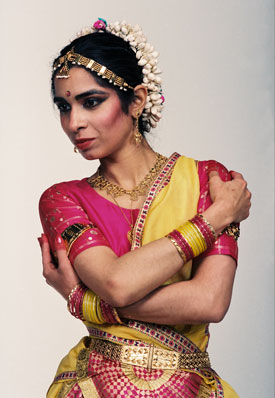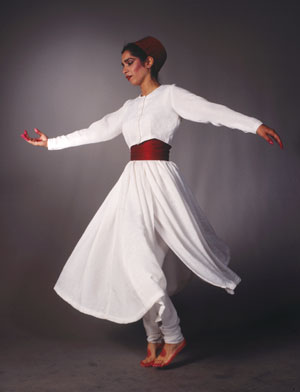

|
Hailing from Pakistan, Tehreema Mitha moved to the US in the 1990s, where she started the Tehreema Mitha Dance Company so she could create and choreograph more freely.
In her 22-year dance career, Mitha has choreographed over 60 original solo and ensemble works and has a large repertoire of tradition dances passed down through the generations. She ran the only dance company in Pakistan for five years, before moving to the US and is considered the only Muslim woman from Pakistan to run a dance company.“Tehreema’s mother and tutor, Indu Mitha, grew up in India and at the time of Partition in 1949 moved to Pakistan to be with her husband who was soldier in the Pakistan army,” says Hirji.
“Tehreema learned the traditions of South Asian Dance, including bharata-natyam, from her mother, but over time, she has also developed contemporary dances, challenging her audiences in Pakistan and now in North America, to rethink their ideas about what constitutes South Asian dance.”
Mitha’s dances embody a variety of themes which touch on literature, science, philosophy as well as the joys and complications, confusion and despair of modern times.
“For me, the life-histories of Tehreema and her mother, particularly their movements between geo-political spaces and the ruptures caused by such movements as well as the opportunities they provide, exemplify the condition that many Muslims find themselves in today,” says Hirji. “In addition to exploring the extent to which Tehreema’s dance and choreography speak to these issues, I am also interested in Tehreema’s use of the Muslim traditions, particularly written poetry, in her dance.
”The dance Raks e-Rooh (Dance of the Soul) draws upon the mystical texts of the 13th century Sufi Muslim poet Jalal al-din Rumi, Hirji says. Mitha also uses other poets in her wor,k including the Urdu poet-intellectual Ahmad Faiz and the Punjabi Muslim poet-mystic Bulleh Shah.
“The embodiment of these texts in her dance is, I believe, a distinctive feature of Tehreema’s work and speaks to issue of how textuality continues to play a critical role in the social and cultural expressions of Muslims.
”In addition to choreographing and dancing, Mitha also composes and produces the music for each dance and designs the costumes. Her dances, whether solos or with the company, move from classical to contemporary, including a what she calls bridging dance which incorporate a bit of both.
Mitha’s work has been billed as athletic, intricate, dramatic, intensely emotional and at times humorous. Despite political, religious and cultural obstacles, Mitha has given solo performances in Pakistan, Afghanistan, Norway, China, India, Germany, England, Guatemala and the US.Mitha is one of two recipients of this year’s Kennedy Center Local Dance Commissioning project.
|





